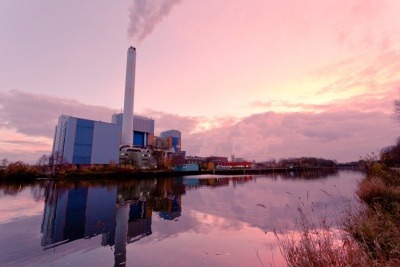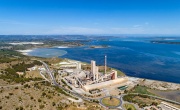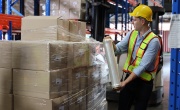Leftover Mixed Waste Sorting can make valuable savings prior to incineration
A new study written by Dr Dominic Hogg and published by Zero Waste Europe highlights economic gains and emissions reduction from sorting waste prior to incineration, notably as an alternative to or in combination with carbon capture storage.
As the European Union deliberates the inclusion of municipal waste incineration in the EU Emissions Trading Scheme (EU ETS) and the UK looks set to follow, a comprehensive study conducted by Zero Waste Europe and Equanimator Ltd offers critical insights into effective strategies for reducing the climate impact of waste incineration.
 The study, Materials or Gases? How to Capture Carbon, compares two key approaches — Leftover Mixed Waste Sorting (LMWS) and Carbon Capture and Storage (CCS) — evaluating their potential in minimising the environmental footprint of incinerators.
The study, Materials or Gases? How to Capture Carbon, compares two key approaches — Leftover Mixed Waste Sorting (LMWS) and Carbon Capture and Storage (CCS) — evaluating their potential in minimising the environmental footprint of incinerators.
The research underscores a significant distinction between the two methodologies. While incineration with CCS can lead to higher reductions in greenhouse gases, the associated costs are notably higher, challenging its economic feasibility.
In contrast, the research finds that LMWS emerges as a rapid and financially viable alternative, offering substantial reductions in greenhouse gases from incineration without further technological lock-in, thanks to its cheaper and more flexible infrastructure.
Commenting on this latest report, Dominic Hogg, Director of Equanimator, says: “The findings of this study reveal that the sorting system stands out as the most cost-effective method for achieving system-wide reductions in CO2 emissions. Conversely, carbon capture and storage emerged as the least cost-effective means. The synergy of both approaches, however, demonstrates the potential for the greatest overall reduction in carbon dioxide emissions, cutting the average cost of reduction by approximately half compared to relying on CCS alone.
“Policymakers and waste managers must prioritise a holistic perspective, ensuring that a narrow focus on incineration emissions does not impede implementation of sorting systems, particularly at operational facilities in the future."
LMWS, as modelled in the study, involves extracting materials (approximately 215kg per tonne of waste input), with the residual waste subsequently incinerated. This process targets all metals, a high proportion of plastics, as well as some fibre (paper and cardboard) and polyester and cotton. The modelling in the report estimates a central scenario in which the sale of these materials will generate €37.29 from each input tonne that goes through LMWS.
This process leads to the export of less energy compared to the baseline scenario. This reduction is attributed to a decrease in the volume of waste, alongside its reduced carbon content and lower calorific value. Consequently, the carbon remaining in the residual waste, released as CO2, has a reduced fossil component compared to the baseline situation.
In contrast, the effectiveness of CCS in reducing greenhouse gases is dependent on the rates of CO2 capture. The energy utilised in the CCS process is typically sourced from the incinerator itself. This arrangement results in a lower amount of energy being exported. Importantly, the study notes that in scenarios where both LMWS and CCS are applied, and with a transition to a completely decarbonised power sector, there are significant implications for greenhouse gas reduction.
The study also explores the financial aspects of LMWS and CCS. It reveals that the initial costs for using CCS in incineration processes range between €132 and €153 per tonne of CO2, which is expected to decrease to a range of €122 to €143 per tonne of CO2 as energy is further decarbonized. These costs exceed the recent price under the ETS, which has mostly ranged between €80 and €90 per tonne of CO2.
In comparison, a combined approach of LMWS and CCS achieves greater CO2 reduction at a more affordable cost per tonne of CO2 compared to CCS alone.
The report assumes that the cost of capital for LMWS and CCS investments to be largely similar, though potentially this underestimates the risks associated with CCS as Carbon Capture Storage remains a difficult proposition to technically and economically deliver. Despite substantial investment and inflated expectations, to date there are very few successful demonstrations that it can play a major role in tackling CO2 emissions, while many have been abandoned for economic reasons.
Furthermore, the report delves into the practical implementation of these technologies. LMWS is highlighted as a quick, low-cost, and flexible solution, easily implementable in various settings. It suggests a sequential approach, advocating for the widespread implementation of LMWS first, followed by CCS in suitable facilities.
Following these findings, Zero Waste Europe recommends the EU adopt a step-by-step approach, extensively using LMWS initially, followed by targeted application of CCS only in facilities deemed necessary in the future. This recommendation aligns with the broader environmental objectives of reducing waste and enhancing recycling, integrating efficient waste management technologies in the evolving landscape of waste management policies.
Earlier this month, twenty-three environmental NGOs, including Zero Waste Europe, signed a position paper arguing against the mandatory implementation of CCS in waste incinerators. The paper highlights increasing recycling rates, the overcapacity of incinerators, and the superiority of mixed waste sorting over CCS.
Janek Vahk, Zero Pollution Policy Manager at Zero Waste Europe commented:
“The key point is that the implementation of mixed waste sorting will be a 'low-regret' solution. This approach not only aids Member States in achieving their recycling and climate targets but also plays a crucial role in reducing incineration capacity in those Member States where excessive capacity currently exists.
“In fact, capturing fossil-based materials with high calorific value, such as plastics and artificial textiles, before incineration, would create space to handle more residual waste within the same capacity. This, in turn, supports decommissioning plans that are already necessary due to the evident overcapacity in Europe.”







